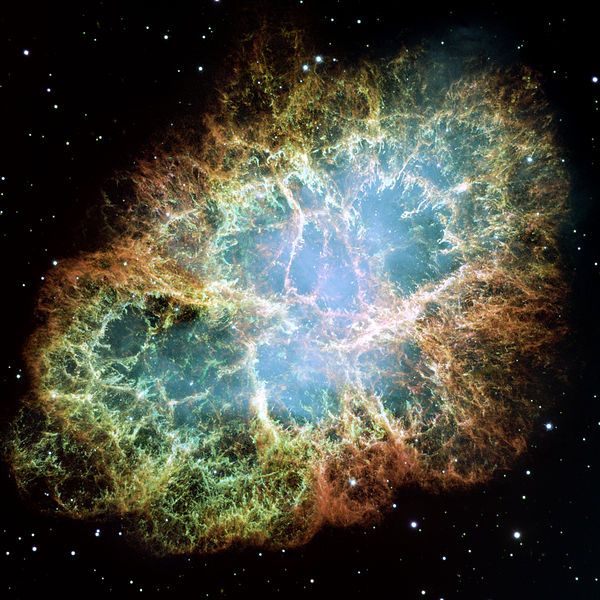
1. July 4, 1054 -- Day the Sky Got Brighter
This 2005 NASA's Hubble Space Telescope image of Crab Nebula shows the remnant of star's supernova explosion.July 4th was a significant day long before America started celebrating it. It also marks the first time on record that a new object appeared in the constellation Taurus -- an object so bright it could be seen in the daytime sky. Not surprisingly, people around the world couldn't help but take notice. Chinese astronomers labeled it a "guest star" and noted that, at night, it shone almost four times brighter than Venus. They soon began speculating that its appearance heralded the Emperor at the time, Jen Tsung.
Meanwhile, on the other side of the globe, the Anasazi Indians of western North America may also have noticed the star. Archeologists believe images carved into Arizona rocks from that era depict the same mysterious phenomenon. But one group of people left no record of having witnessed the "guest star" -- the Europeans. It's speculated they considered it heretical to suggest that anything in the night sky was not eternal.
The Chinese astronomers were right about the object being a star. More specifically, however, it was a star in the process of exploding, otherwise known as a supernova. When stars burst, they are momentarily as bright as a billion stars, so even though the phenomenon had occurred so far away from Earth, its brightness was still immense.
Now known as the Crab Nebula, this supernova remnant is hardly a distant memory. Today, it consists of an expanding shell of gas that's 10 light years across and is moving outward at about 700 miles per second. At its center is a dense remnant called a neutron star, which is about the size of Manhattan in radius and rotates roughly 30 times per second. As a result, the Crab Nebula sends out pulses of radiation that reach the Earth at that same rate. Scientists wondered about the source of this mysterious pulsing when it was first detected in 1968, but they quickly pinned it on the ancient Crab and not, say, alien civilizations trying to contact us.

No comments:
Post a Comment